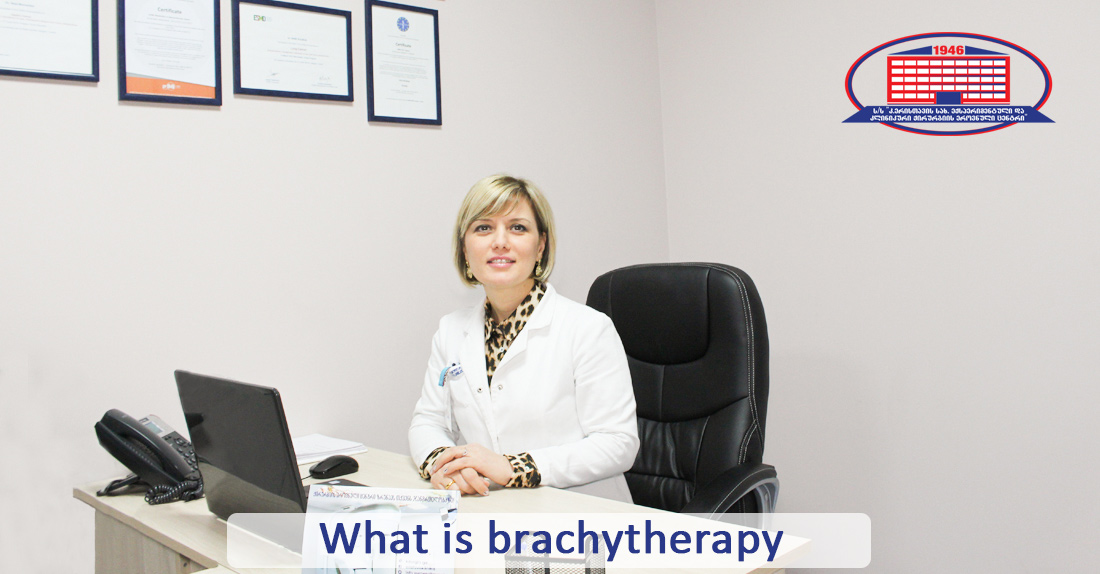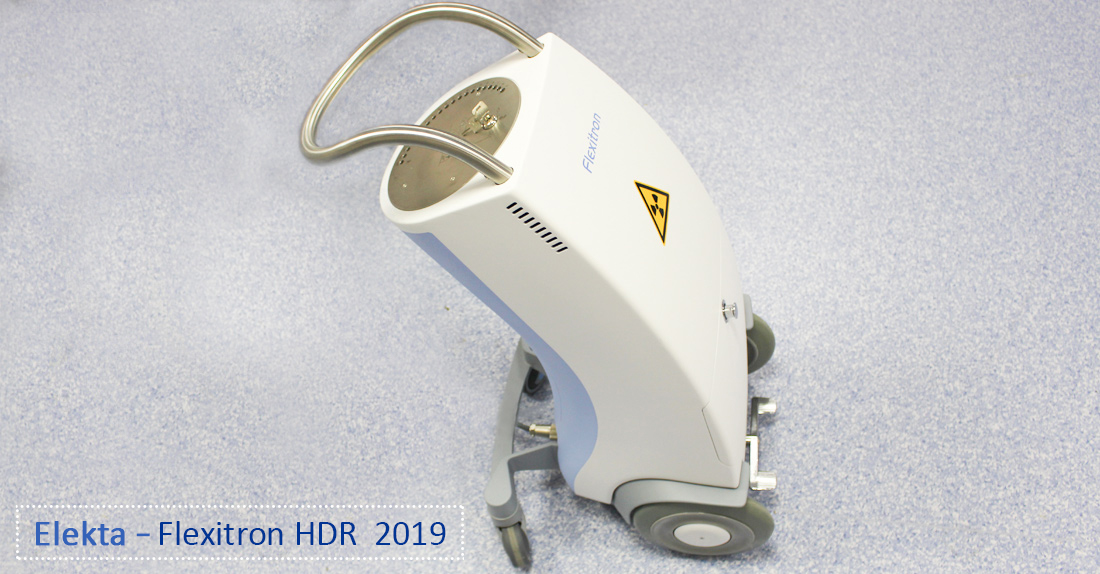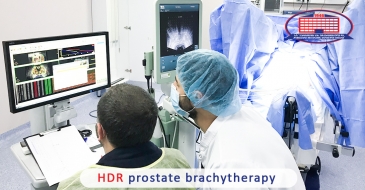
Brachytherapy, also known as contact radiotherapy is one of the forms of radiation therapy.
In brachytherapy, radiation source is placed directly in the organ damaged by cancer i.e., inside cancer or on the surface of cancer; therefore, it affects the whole mass. In this way, radiation is delivered directly to the targeted site maximally protecting other healthy organs and structures. It’s an invasive method of irradiation.
Brachytherapy is mostly carried out in combination with remote radiation therapy. It’s ordered as a neoadjuvant (stand-alone) and adjuvant (auxiliary) treatment for radical and palliative (relieve condition) purposes, for example, to stop the bleeding and resolve headache.
We want to remind readers that the Radiation Department successfully functions in National Center of Surgery, where numerous patients have received high-quality radiation therapy under the surveillance of Georgian and foreign specialists.
There’s one more important news for oncology patients in the clinic – we have an opportunity to offer brachytherapy treatment.
Brachytherapy unit of National Center of Surgery is equipped with the latest high dose rate Flexitron-HDR 2019 manufactured by Elekta, which has an Iri-192 as a source of radiation. The device is distinguished with sophisticated, fast and accurate 3D system of treatment planning.

The latest, clinically sophisticated applicators present the advantage of the brachytherapy device, using which the brachytherapist maximally affects the area damaged by cancer. What’s more important, all applicators have a specification of magnetic-resonance tomography that enables us to plan each brachytherapy procedure using magnetic-resonance tomography images. Only with such comprehensive planning is it feasible to deliver radical treatment of stage IIB-IIIA-IIIB-IVA cancers.
Radiation oncologist, brachytherapist of the radiotherapy department of National Center of Surgery, Irina Jobava discusses brachytherapy.
– Dr. Irina, What kind of cancers are treated with brachytherapy in National Center of Surgery?
– We start to treat cancers of all sites; Brachytherapy will be conducted in combination with teletherapy or as a stand-alone.
Such sites are:
- Stage IA-IB,IC-IIA,IIB,IIC_IIIA,B,C- IVA cervical, uterine, vaginal ad vulvar cancer;
- Prostate cancer (HDR brachytherapy);
- Skin cancers;
- Soft tissues (sarcoma);
- Head-neck cancers and particularly, cancer of tongue, lips, cheeks and nasal cavity;
- Oesophageal cancer (palliative brachytherapy to stop the bleeding or in case of cancerous stenosis);
- Anal and rectal ampulla cancer
- Bronchial cancer (to stop the bleeding);
- Also, breast cancer’s auxiliary boost brachytherapy and APBI-HDR brachytherapy – monotherapy. Both of them are a form of inter-tissue brachytherapy.
Procedure is delivered once or twice a day. The complete course of treatment comprises 1 to 5 procedures. Of course, it all depends on the site, stage of cancer, and treatment method.
– What are the advantages of brachytherapy?
–The primary advantages of brachytherapy are:
- High biological effect (high dose radiation sensitivity of cancer cells);
- Rapid exposure of high dose radiation on cancer cells;
- Complete control of cancer;
- Minimal radiation toxicity to surrounding healthy tissues;
- One-day procedure (the low number of procedures in total).
– Could you describe the process of conducting brachytherapy?
–Brachytherapy is conducted on an outpatient basis, i.e.patient is held up in the clinic only for several hours. After the procedure, s/he is discharged.
Before the brachytherapy procedure, patients go through several steps:
- Preparation of the patient (premedication);
- Brachytherapy procedure is conducted after respective analgesia using general, local, and regional anesthesia. The type of analgesia depends on the treatment site.
- Radiation oncologist places special applicators in the targeted organ, directly in cancer or on the surface of it. The procedure is conducted in accordance with aseptic, antiseptic rules and under the visual and ultrasound control;
- Pre-planning is carried out based on X-ray images (computed tomography or magnetic resonance tomography, positron-emission tomography). To maximally affect the area of irradiation, the doctor and physician create a virtual plan in advance, which is based on an analysis of respective x-ray images. 3D planning of placed applicators means the maximal effect on the targeted area and maximal protection of surrounding healthy structures;
- Delivering a treatment/irradiation lasts approximately 5-10 minutes. During irradiation processes, the patient is monitored using tele and audio control.
– What can you tell us about invasive methods of brachytherapy?
– Depending on the placement of the source, the procedure of brachytherapy might be the following type:
- Intracavitary;
- Interstitial (inter-tissue);
- Intraluminal (lumen);
- Endovascular;
- Contact i.e., surface (in case of skin and soft tissue cancers).
All methods mentioned above are invasive, during which applicator is placed directly in the damaged area or on its’ surface.
– What are the rehabilitation processes after the brachytherapy treatment?
– After the brachytherapy procedure, the patient stays in the hospital only for several hours and afterward, s/he is discharged under the respective recommendation of the doctor.
Wish you health!














